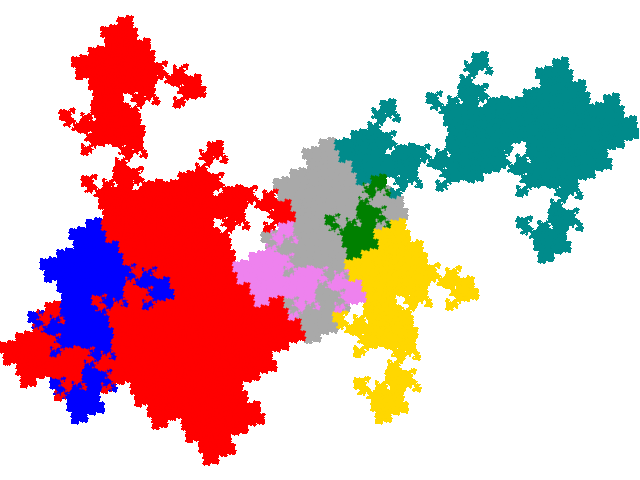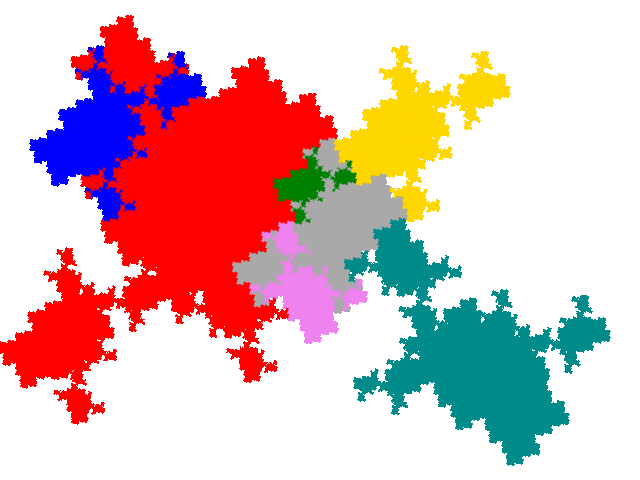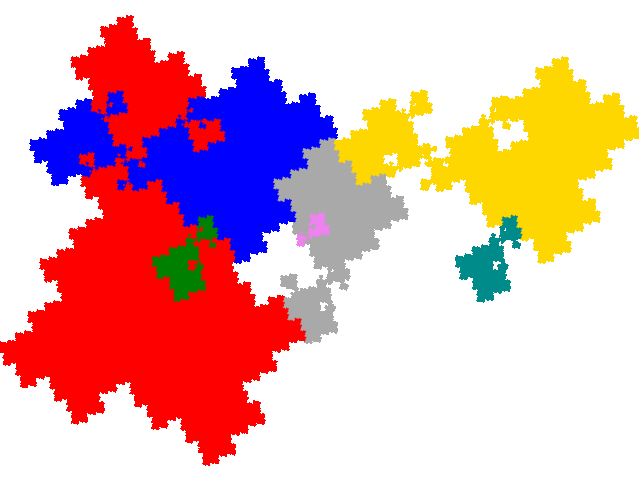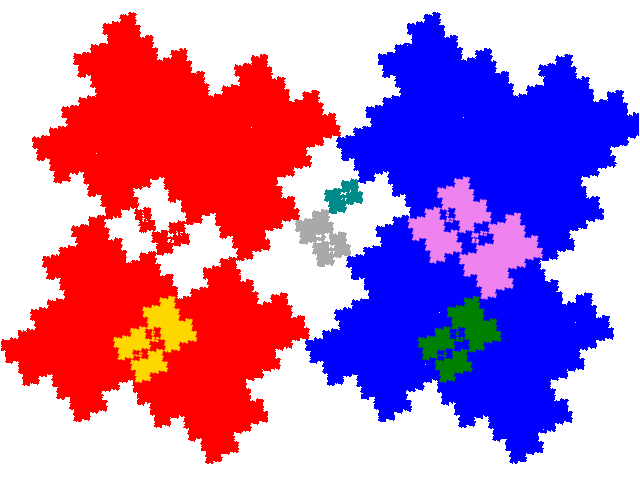Some tiles associated with the 6th unit cubic Pisot number
Order 7 Paraallosymmetric Tiles
(Overview)
Applying a composition of the partial postautocomposition
and partial
postallocomposition techniques to the order 3 symmetric tile produces 36
legitimate and fertile allosymmetric tile IFSs. Four of
these are degenerate versions of a symmetric attractor, and would potentially
give rise to 56 demisymmetric tiles. However they are disconnected, and
disconnected in such a manner than it can be seen by inspection that all the
candidate demisymmetric tiles are also disconnected. Sets of order 7 co-cell
attractors include 4 “base” attractors and 124 “para”
attractors with half the area of the “base” attractors. Thus the 32
remaining IFSs can be divided among 8 sets of co-cell attractors, but these
sets come in pairs differing by rotation by 180° around the origin, so only 4
sets have to be considered. There are two sets with dissection equation c+c2+3c3+c4+c5,
one set with dissection equation c+2c2+c3+2c5+c7,
and one set with dissection equation 2c+c4+2c5+c6+c7.
Although all members of a set have a similarity dimension of 2, not all are
disconnected, so the number of tiles in each set is a question requiring
empirical investigation. They are 88, 73, 88 and 60 tiles in the sets
respectively.
 |
For any order 5 tile there are 32 attractors, including the original
one. The same set of attractors is generated regardless of which
asymmetric tile is started with. 8 of the attractors generate 6 partial
postcomposition derivatives of the symmetric and demisymmetric tiles, and one is disconnected,
leaving 88 novel tiles.
It turns out that all of these 23 tiles are fractional symmetric
tiles, where 6 copies, made up of two copies each of three different
sizes make up a symmetric tile. The cell transforms are
p→pp→-pp→ap - 1p→-(ap - 1)
The unit cells are shown on the pages for the various groups of
tiles.
|
 |
|
 |
The four tiles with dissection equation c+2c2+c3+2c5+c7
all generate the same set of attractors. 36 of the attractors are
disconnected, so this gives us 88 new tiles.
These tiles all have 6 copies of the tile in the unit cell, with
signature 001144.
|
 |
The four tiles with dissection equation 2c+c4+2c5+c6+c7
all generate the same set of attractors. 64 of the attractors are
disconnected, so this gives us 60 new tiles.
The tiles can be divided into 4 groups differing in the size of the
largest disclike part of the unit cell occupied solely by one copy of
the tile.
- 1st group (4 tiles)
- 2nd group (8 tiles)
- 3rd group (32 tiles)
- 4th group (16 tiles)
These tiles all have 6 copies of the tile in the unit cell, with
signature 003344.
|
© 2017 Stewart R. Hinsley



